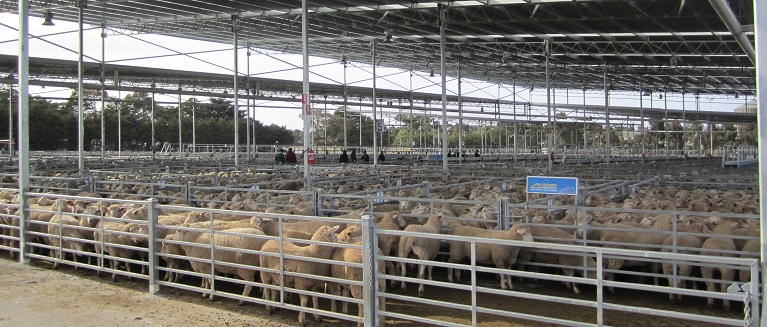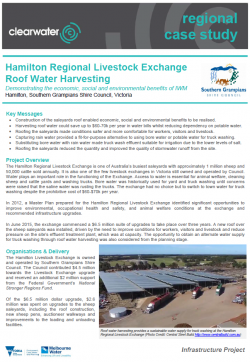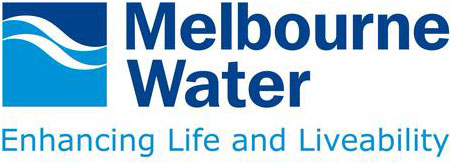resource library
Array

Hamilton Livestock Exchange Water Harvesting
Southern Grampians Shire Council
Published: 17 July 2017
Project Overview
The Hamilton Regional Livestock Exchange is one of Australia’s busiest saleyards with approximately 1 million sheep and 50,000 cattle sold annually.In June 2015, the exchange commenced a $6.5 million suite of upgrades to take place over three years. This included the installation of a new roof over the sheep saleyards, which was driven by the need to improve conditions for workers, visitors and livestock and reduce pressure on the site’s effluent treatment plant, which was at storage capacity. The opportunity to obtain an alternate water supply for truck washing through roof water harvesting was also considered from the planning stage.
Key Messages
- Construction of the saleyards roof enabled economic, social and environmental benefits to be realised.
- Harvesting roof water could save up to $60-70k per year in water bills whilst reducing dependency on potable water.
- Roofing the saleyards made conditions safer and more comfortable for workers, visitors and livestock.
- Capturing rain water provided a fit-for-purpose alternative to using bore water or potable water for truck washing.
- Substituting bore water with rain water made truck wash effluent suitable for irrigation due to the lower levels of salt.
- Roofing the saleyards reduced the quantity and improved the quality of stormwater runoff from the site.
Organisations
The Hamilton Regional Livestock Exchange is owned and operated by Southern Grampians Shire Council.
Project Cost
The Council contributed $4.5 million towards the Livestock Exchange upgrade and received an additional $2 million support from the Federal Government’s National Stronger Regions Fund. Construction of the saleyards roof, including drainage pipes and water tanks, made up approximately $3 million of the overall $6.5 million upgrade cost.
Timeframe
The Livestock Exchange upgrades commenced in June 2015 and are expected to be completed within three years. The saleyards upgrades were completed in November 2015.
